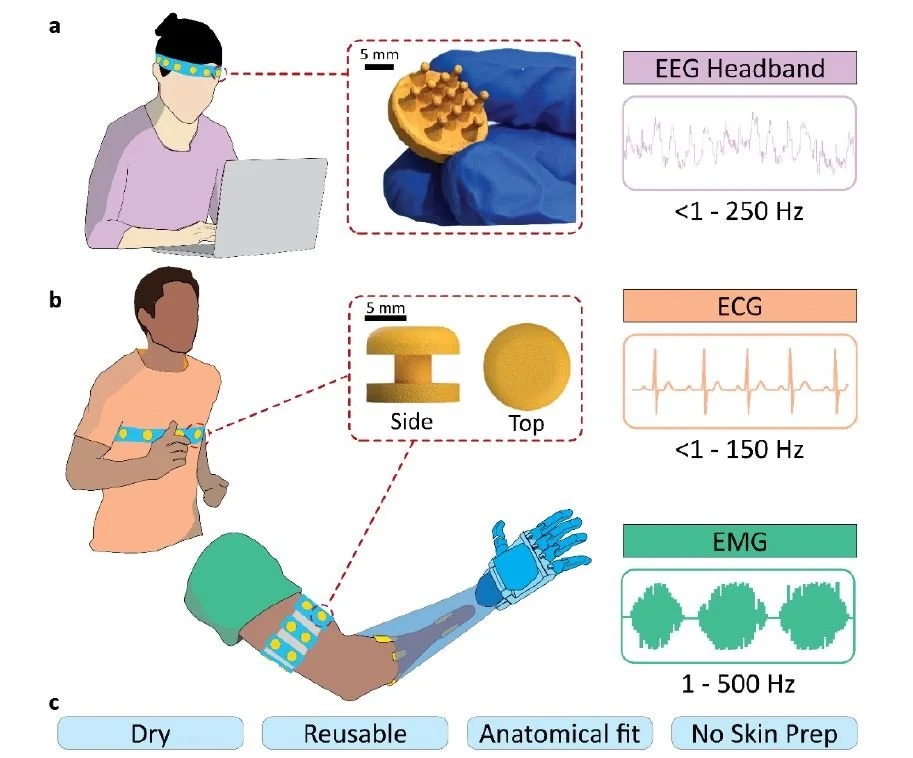Rapid dry electrode fabrication paper now on arXiv
Ryan Kaveh and Natalie Tetreault’s paper from Muller and Arias groups presenting a rapid fabrication method for low impedance, 3D dry electrodes is now available on arXiv. Read it here:
R. Kaveh*, N. Tetreault*, K. Gopalan, J. Maravilla, M. Lustig, R. Muller, A. C. Arias, “Rapid Fabrication of Low Impedance, 3D Dry Electrodes for Physiological Sensing”. arXiv 2201.03612, Jan 2022.
The performance of medical devices that record electrophysiological activity to diagnose epilepsy and cardiac arrythmia depend on consistently low impedance interfaces between conductors and the skin. Clinically standard devices, wet electrodes, use hydrogels and skin abrasion to improve the interface and recorded signal quality. These electrodes and their required preparation are challenging to self-administer which reduces the frequency of disease monitoring and impedes in-home care. Wearable dry electrodes are more practical; however, they show higher impedance relative to wet electrodes and are costly to customize. In this work, a fabrication method for producing anatomically fit, dry electrodes that can be optimized for individuals and/or specific recording locations on the body is presented. Electroless gold plating is used in combination with 3D printing to enable anatomically fit, high-performance, 3D dry electrodes that do not require any skin preparation and are comfortable to wear. The performance of the example 3D dry electrodes is compared to clinically standard devices. The resulting electrodes exhibited an average electrode-skin impedance of 71.2 kOhms at 50Hz and DC offset of -20 mV, which is within the range achieved by clinical wet electrodes.

